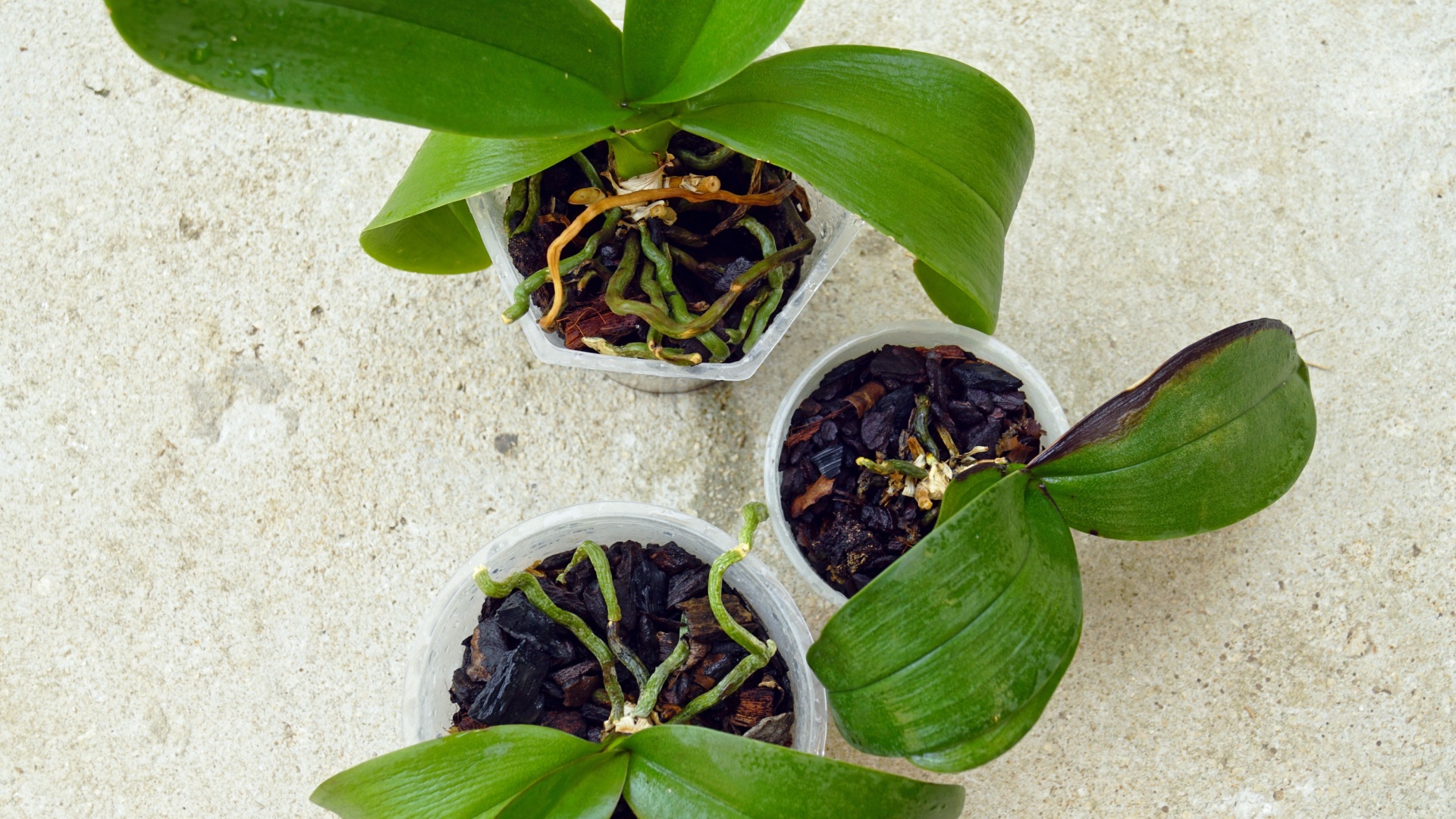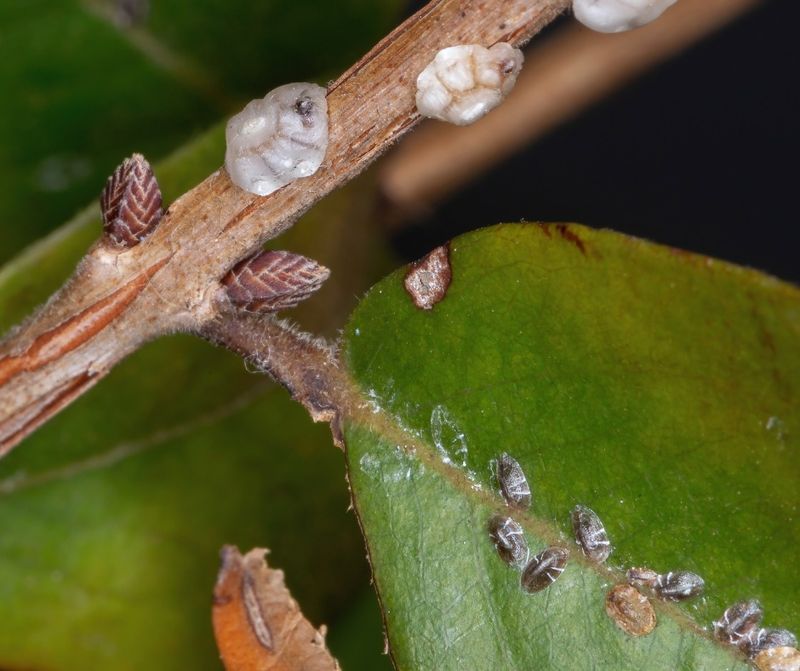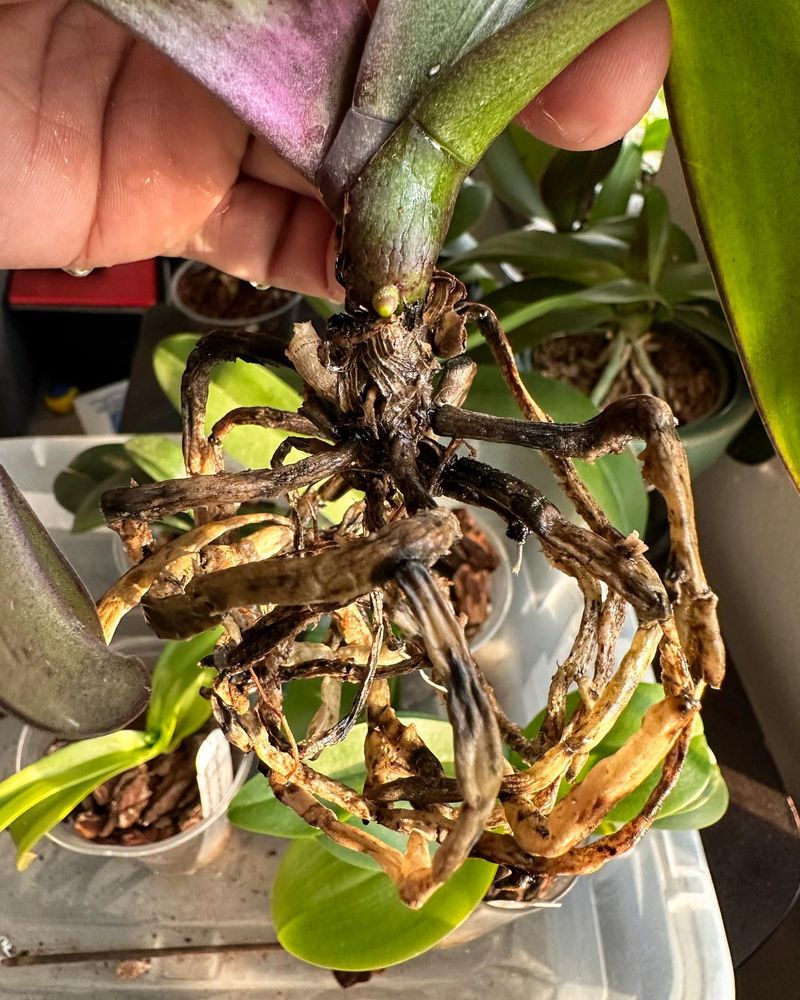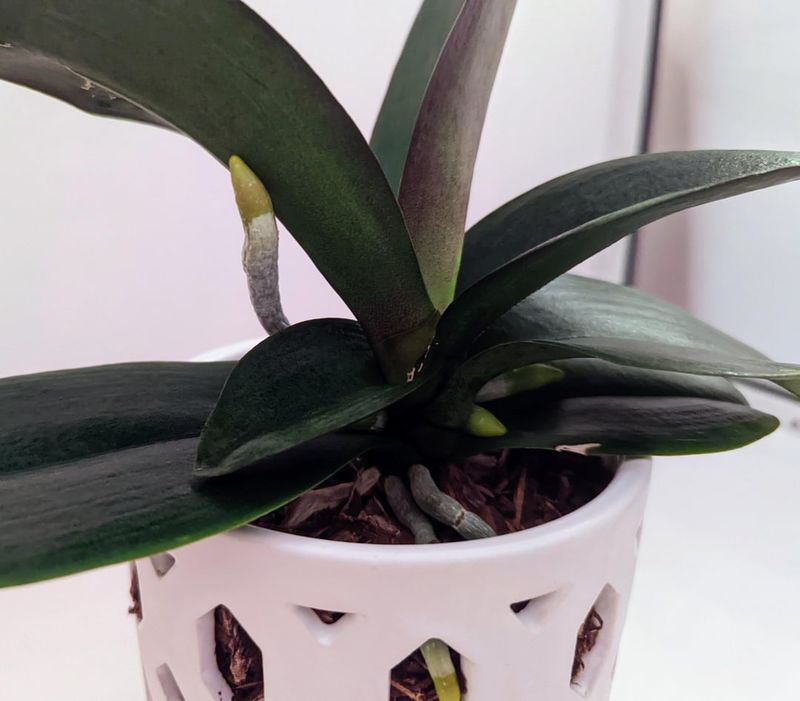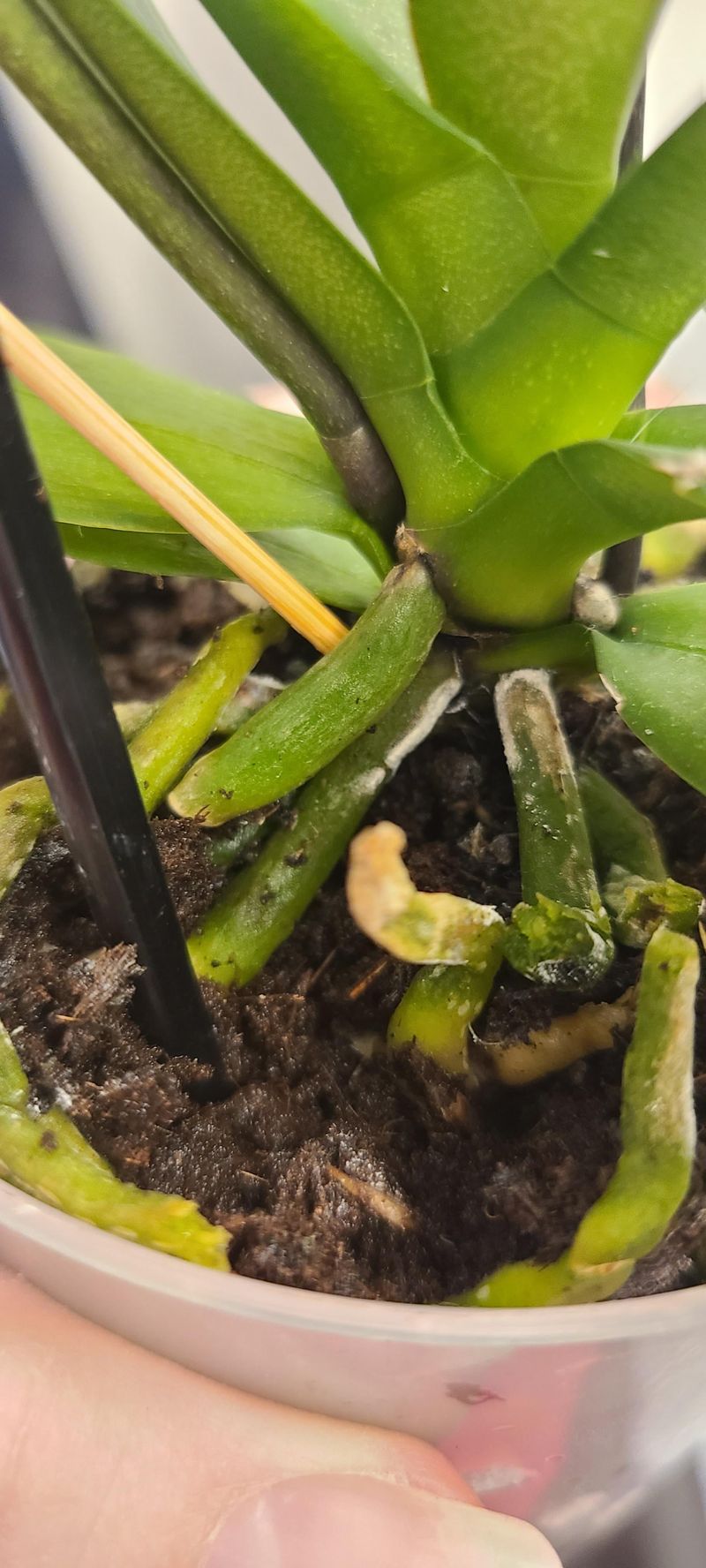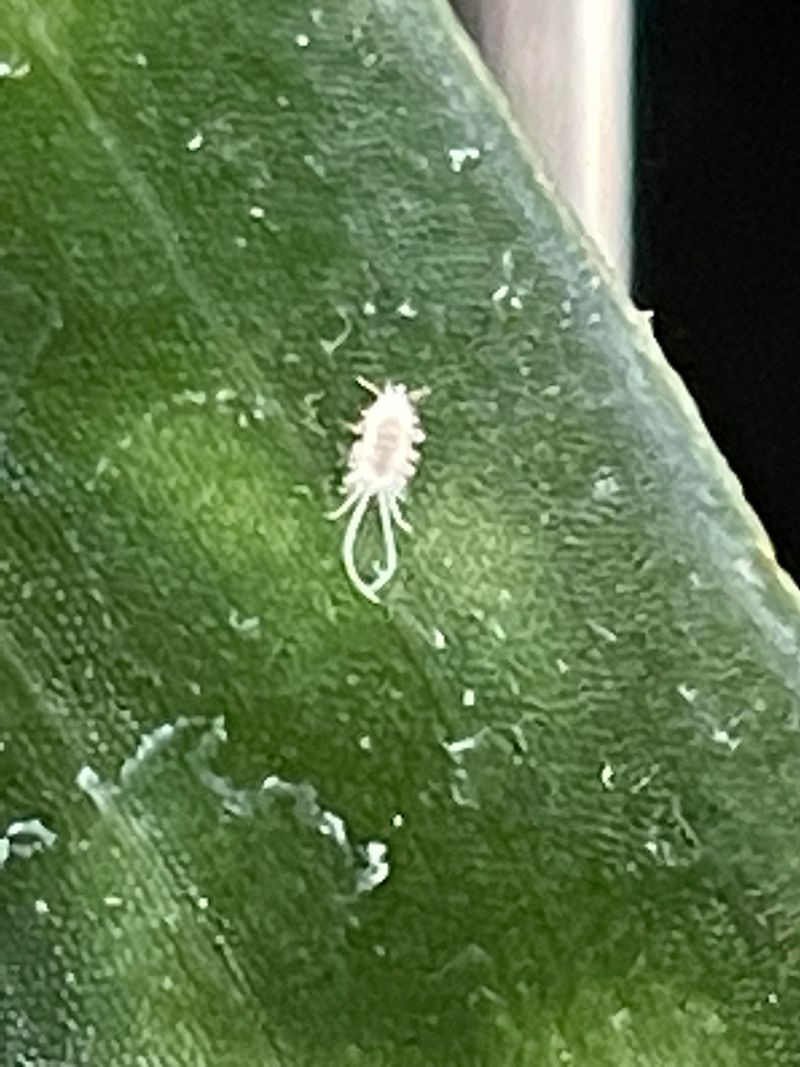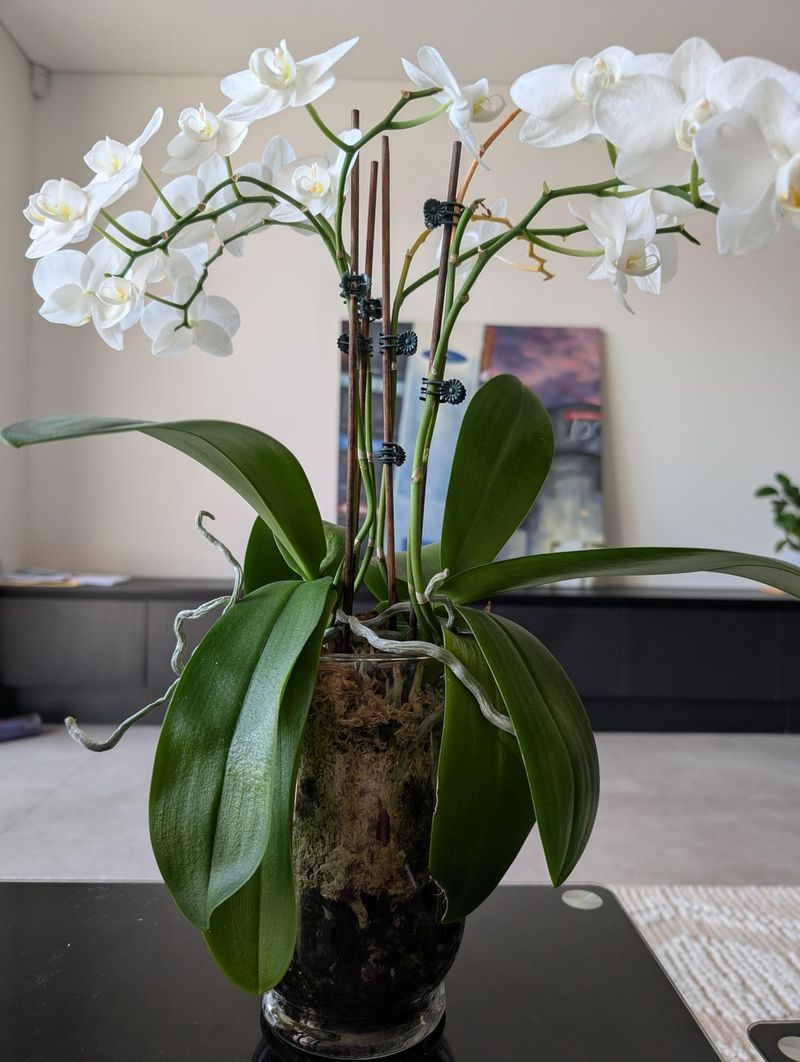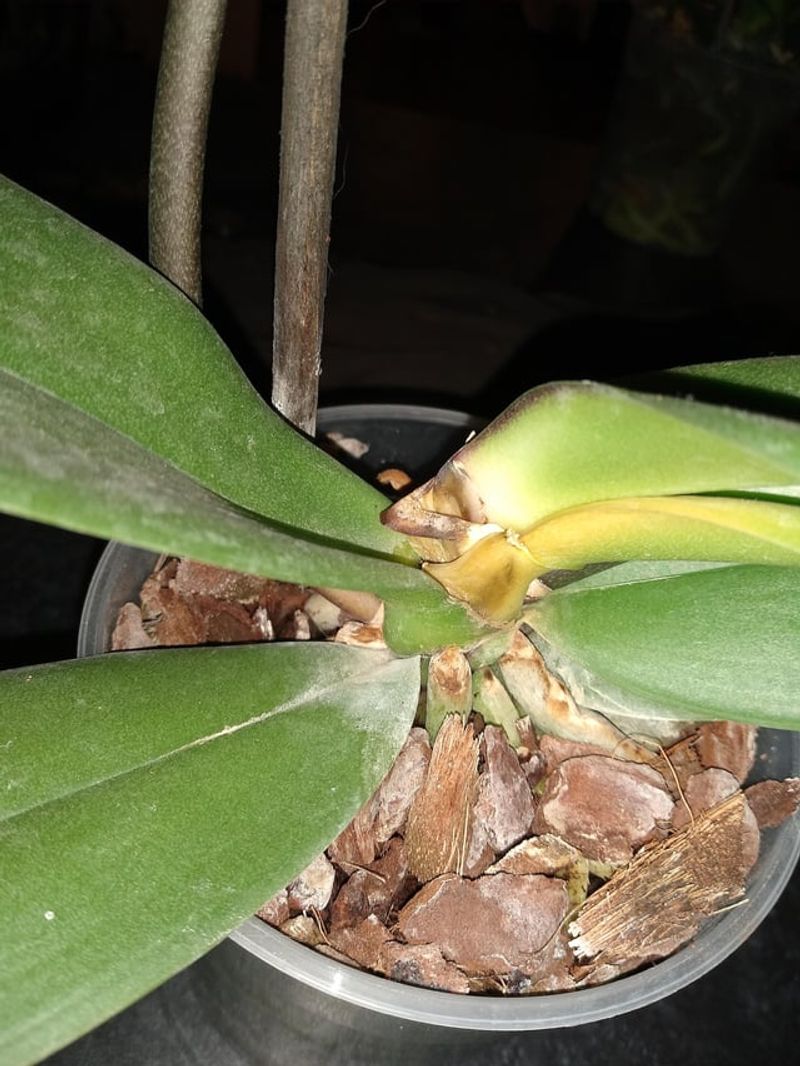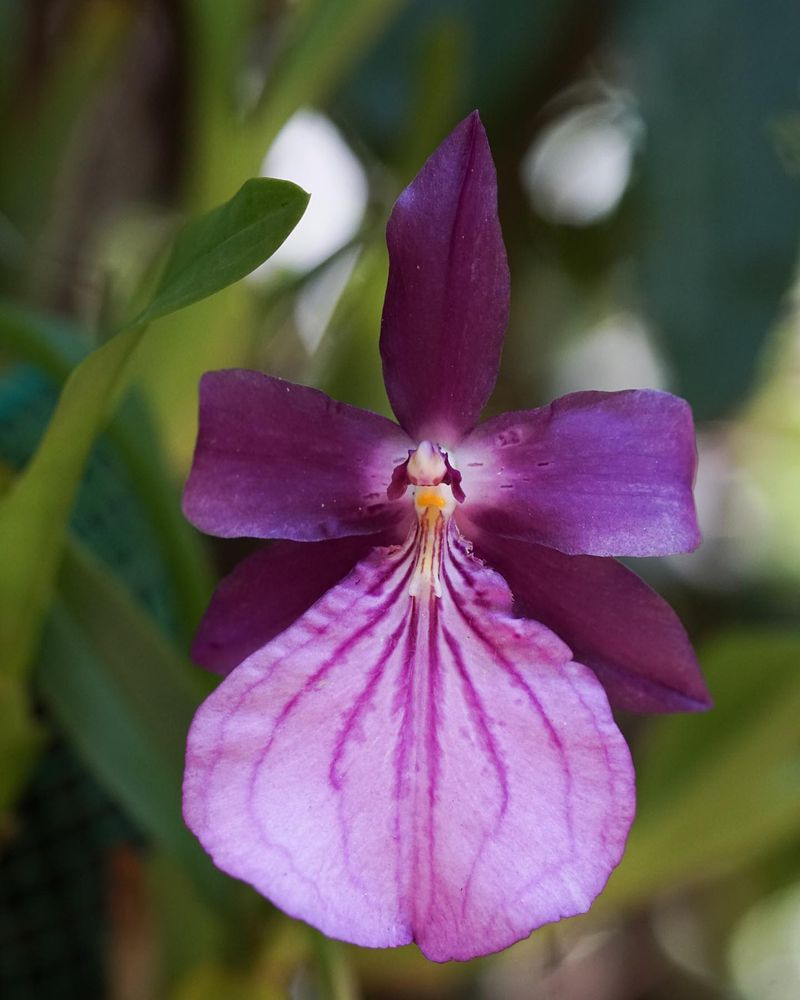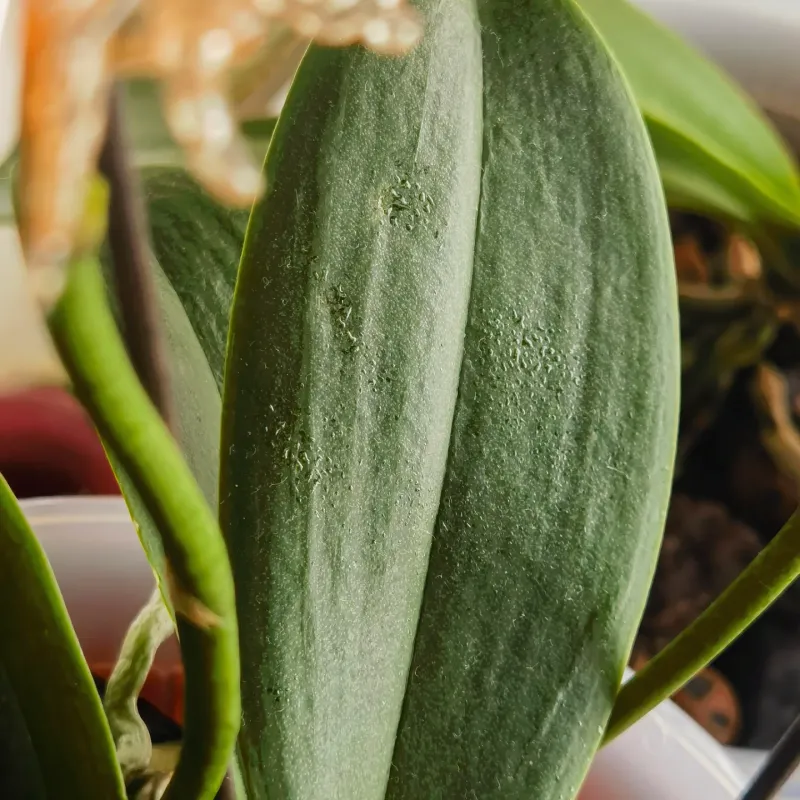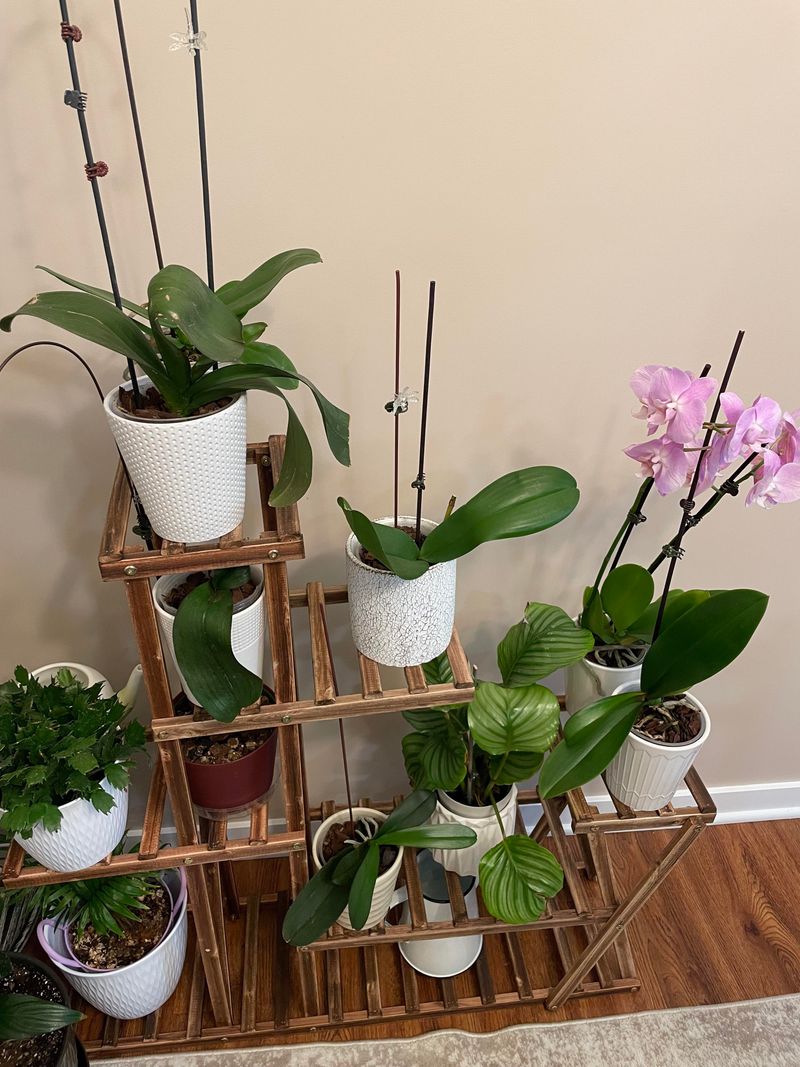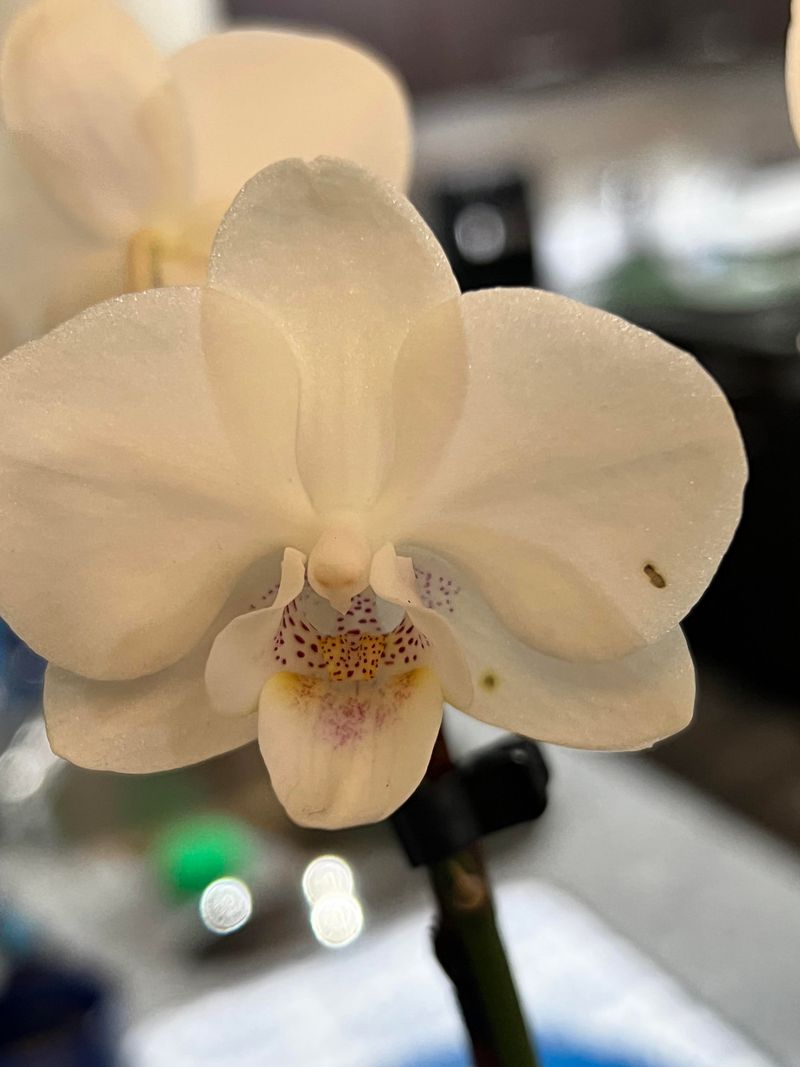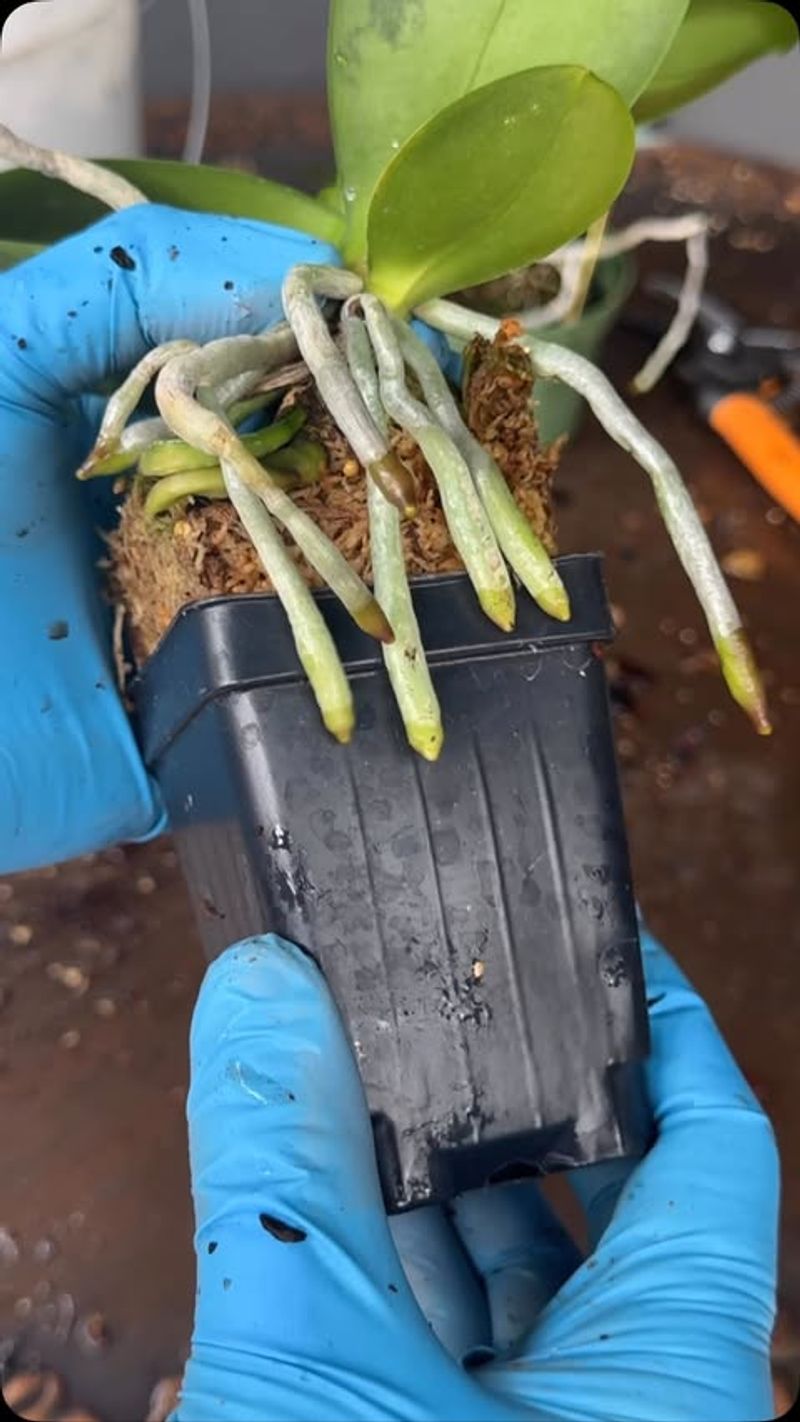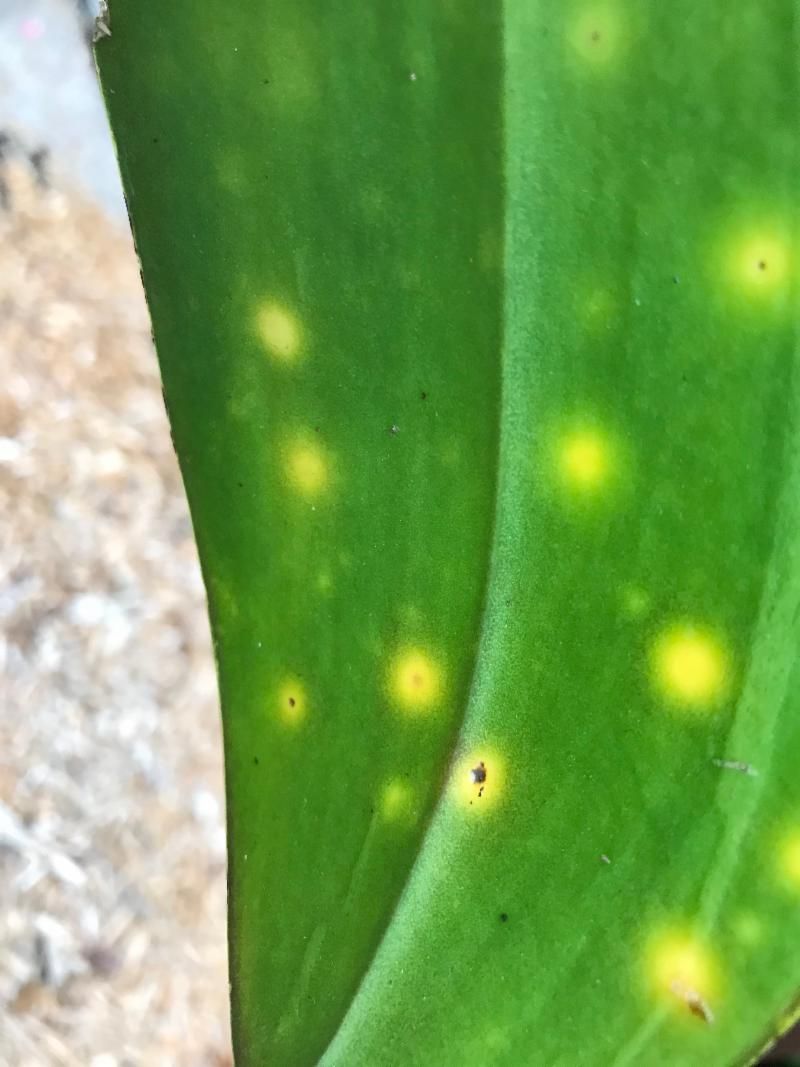Orchids may look elegant and low-maintenance, but in Florida’s lush, tricky climate, they can throw curveballs that even seasoned gardeners miss. From sneaky root rot to light levels that look right but aren’t, these problems often fly under the radar—until your once-stunning blooms start to sulk.
Catching the little things early can make the difference between a thriving showstopper and a silent struggle on the windowsill.
1. Sneaky Scale Insects
Those tiny brown bumps on your orchid stems aren’t part of the plant – they’re scale insects quietly draining your orchid’s life! These pests hide in plain sight, often mistaken for natural spotting.
To treat them, gently scrape them off with a soft toothbrush dipped in rubbing alcohol. For serious infestations, isolate the plant and apply horticultural oil weekly until they’re gone.
2. Root Rot From Overwatering
Many Florida orchid lovers kill with kindness by watering too much. Mushy, brown roots spell trouble and indicate rot has set in. The humid Florida climate already provides moisture, making extra watering dangerous.
Allow orchid roots to dry completely between waterings. Consider using clear pots to monitor root health. When in doubt, it’s better to underwater than overwater in our humid environment.
3. Incorrect Light Exposure
Yellow leaves often signal your orchid is getting too much Florida sunshine. Conversely, no blooms might mean not enough light. Finding that perfect spot can be tricky in our intense southern light.
East-facing windows typically offer ideal morning light without afternoon heat. Use sheer curtains to filter harsh rays. Watch leaf color – bright green indicates good light, while dark green suggests your orchid needs more.
4. Salt Buildup In Potting Media
White crusty deposits on your orchid pot or media aren’t mold – they’re mineral salts from fertilizers and tap water. Florida’s water often contains minerals that accumulate over time, burning delicate roots.
Flush your orchids monthly by running clean water through the pot for several minutes. Consider using rainwater or filtered water for sensitive varieties. Repotting yearly helps eliminate salt buildup that regular flushing can’t remove.
5. Mealybug Infestations
Cotton-like fuzzy patches hiding in leaf joints are mealybugs – destructive pests that multiply rapidly in Florida’s warm climate. Left unchecked, they’ll suck the life from your precious orchids while spreading to nearby plants.
Dab them with alcohol-soaked cotton swabs to remove visible bugs. Neem oil spray works for larger infestations. Check new plants thoroughly before bringing them home, as mealybugs often hitchhike on store-bought orchids.
6. Inappropriate Potting Materials
Regular potting soil spells death for most orchids! These plants need special media that allows air circulation around roots. Florida’s humidity makes proper media choice even more crucial to prevent rot.
Use bark mixes, sphagnum moss, or specialized orchid media depending on your specific variety. Phalaenopsis thrive in bark chunks, while Vandas may need no media at all. Replace decomposing media yearly, as breakdown accelerates in our warm climate.
7. Inadequate Air Circulation
Stagnant air creates a breeding ground for fungal and bacterial problems in Florida’s humid environment. Orchids need moving air to thrive, even indoors.
Set up small fans near your orchid collection to keep air flowing gently. Avoid crowding plants together – each needs space for air movement around leaves and roots. Proper spacing prevents disease spread and helps evaporate excess moisture from leaves and crowns.
8. Crown Rot From Overhead Watering
Water trapped in leaf crowns quickly turns deadly in Florida’s warm temperatures. Black, mushy tissue at the center of your orchid signals crown rot – often fatal if not caught early.
Always water at the base, never from above. If water accidentally pools in leaf crowns, absorb it immediately with tissue or cotton swabs. Morning watering gives plants time to dry before cooler evening temperatures when rot accelerates.
9. Fertilizer Burns
Crispy leaf tips and blackened roots often result from overzealous fertilizing. Florida’s year-round growing season tempts gardeners to fertilize too frequently or too strongly.
Follow the “weekly, weakly” rule – dilute fertilizer to quarter-strength and apply weekly during growing season. Always water thoroughly before fertilizing to protect roots. Skip fertilizing during extreme heat or when plants are stressed, as this can compound damage.
10. Spider Mite Damage
Tiny webs and stippled leaves indicate spider mites – nearly invisible pests that thrive in Florida’s dry winter months. These microscopic menaces multiply rapidly, especially indoors with air conditioning.
Increase humidity around plants with pebble trays filled with water. Spray leaves regularly with water to discourage mites. For active infestations, try insecticidal soap or predatory mites that feed on spider mites without harming your orchids.
11. Improper Temperature Fluctuations
Blasting air conditioning creates dangerous temperature swings for tropical orchids. Moving plants between Florida’s outdoor heat and indoor chill shocks delicate systems, causing bud drop and stunted growth.
Keep orchids away from AC vents and cold windows. Most varieties prefer consistent temperatures between 65-85°F. Remember that night temperatures trigger blooming in many orchids – some need a 10-15 degree drop at night to initiate flower spikes.
12. Ignoring Seasonal Changes
Florida’s subtle seasons affect orchids more than many gardeners realize. Different varieties need adjusted care as temperatures and humidity levels shift throughout the year.
Reduce watering during winter’s cooler, drier months. Many orchids need a rest period with reduced water and fertilizer to trigger spring blooming. Learn your specific variety’s natural bloom cycle and adjust care accordingly for healthier plants and more spectacular flowers.
13. Thrips Damage
Mysterious streaking on flowers and deformed buds often signal thrips – tiny insects that rasp plant tissue and suck sap. These pests love Florida’s warm weather and can ruin prized blooms overnight.
Blue sticky traps help monitor for their presence. Remove damaged flowers immediately to prevent spread. Systemic insecticides work best for severe infestations, though they require careful application following label directions to avoid harming beneficial insects.
14. Wrong Potting Time
Repotting during blooming or dormancy stresses orchids unnecessarily. Florida’s extended growing season confuses many gardeners about optimal timing.
Wait until new root growth appears – usually spring for most varieties – before repotting. This signals the plant is ready to establish in fresh media. Avoid repotting during summer’s extreme heat when plants are already stressed, or during winter’s cooler temperatures when growth slows.
15. Bacterial And Fungal Infections
Black spots with yellow halos or soft, spreading rot indicate bacterial or fungal problems. Florida’s humidity creates perfect conditions for these pathogens to flourish and spread rapidly.
Act quickly by cutting away infected areas with sterilized tools. Apply cinnamon (a natural fungicide) to cut surfaces. Improve air circulation immediately and reduce watering. Serious infections may require commercial fungicides or bactericides specifically formulated for orchids.

